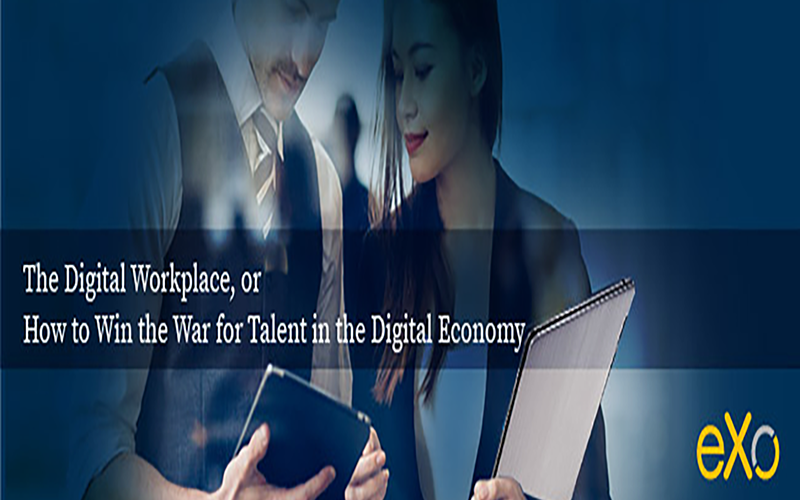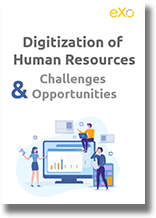- Veronika Mazour
- January 20, 2016
The Digital Workplace: Win the War for Talent in the Digital Economy
Today, human resources departments face new challenges in recruiting and retaining talent.

Content
The workforce shift in numbers
As baby boomers approach retirement age, they need to be replaced and their experience must be captured. But while there are 75 million baby boomers in the United States, the next generation only includes 48 million people, creating a gap between the supply and demand for some positions in the marketplace. This issue is occurring worldwide because most countries experienced the baby boom phenomenon.
On the other side of the spectrum, most of the 80 million “millennials,” also known as generation Y, have joined the workforce. According to the U.S. Bureau of Labor Statistics, they now represent the majority of the workforce, and by 2030, they will make up 75% of the workforce.
In this context, companies face fierce competition to attract workers, forcing them to change their approaches to employee marketing.
Millennials expect very different things from their dream employers than do baby boomers.
New talents’ expectations
While older employees mostly care about compensation, security, and career opportunities, millennials care about other things.
- They want their work to be meaningful. They want to see how their work is valued and aligned with the company’s goals.
- They aspire to flexible career paths, and they appreciate work environments with horizontal information flow and hierarchy but with no information silos.
- They demand flexible work environments, including flexible hours and locations. The separation between their professional and personal lives is blurred; they want personal time at work, but they also give countless personal hours to jobs that inspire them.
- They value transparency in and regular feedback from their leaders.
- Millennials are tech savvy. They came of age in an era of social media and hyper-connectivity, and they expect to find the same level of technology in the workplace. They also expect to find information quickly and effortlessly. They expect the abilities to connect to anybody in the company and to work from home as if they were in the office.
- They are entrepreneurial, and they value collaborative work environments in which they can enhance innovation.
How a digital workplace with a social intranet backbone help?
First, a social intranet directly fulfills items on most of the new talents’ ideal workplace checklists. It is all about connection, flexibility, and collaboration. When the digital workplace meets those expectations, employees have confidence in the company’s future and its ability to be successful in the face of competition.
Organizations that have transformed their traditional intranet portals into collaborative workplaces report multiple business benefits linked to increased employee engagement.
As a bonus, a successful social intranet helps capture silent knowledge from all those experienced workers about to walk out the door.
Let us know if the post has been helpful to you by leaving a comment or contacting us!

FREE WHITE PAPER
- Tags: Digital workplace, Tips & Tricks
Related posts
- All
- eXo
- Digital workplace
- Employee engagement
- Open source
- Future of work
- Internal communication
- Collaboration
- News
- intranet
- workplace
- Knowledge management
- Employee experience
- Employee productivity
- onboarding
- Employee recognition
- Change management
- Cartoon
- Digital transformation
- Infographic
- Remote work
- Industry trends
- Product News
- Thought leadership
- Tips & Tricks
- Tutorial
- Uncategorized
Leave a Reply
( Your e-mail address will not be published)


